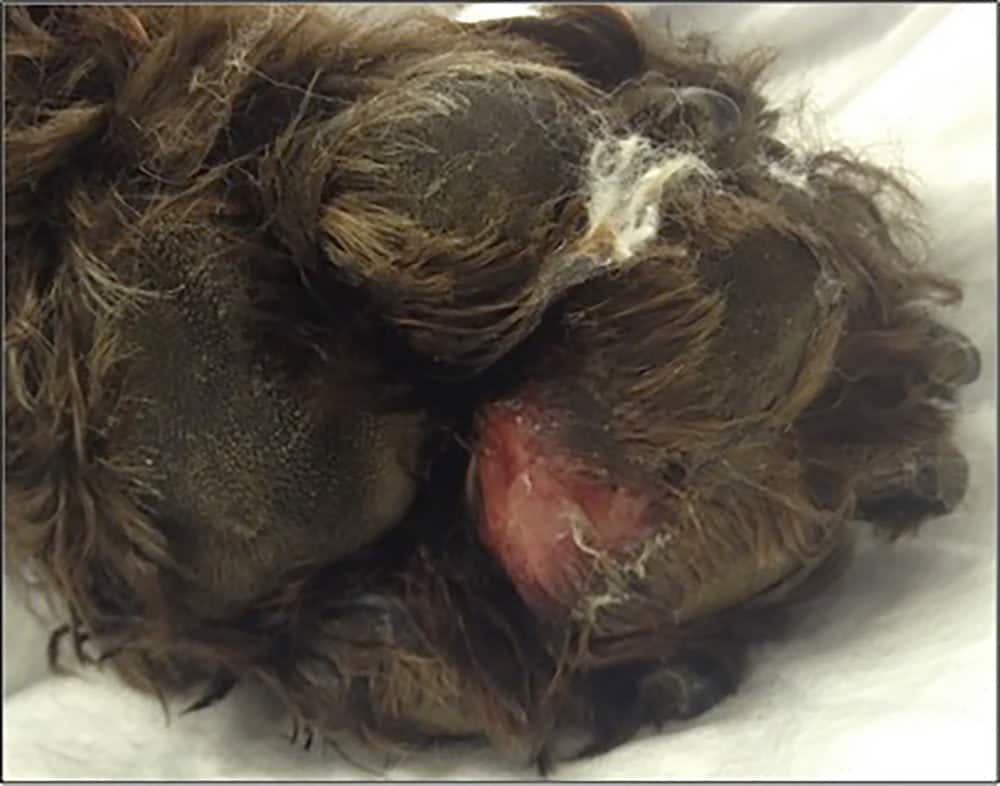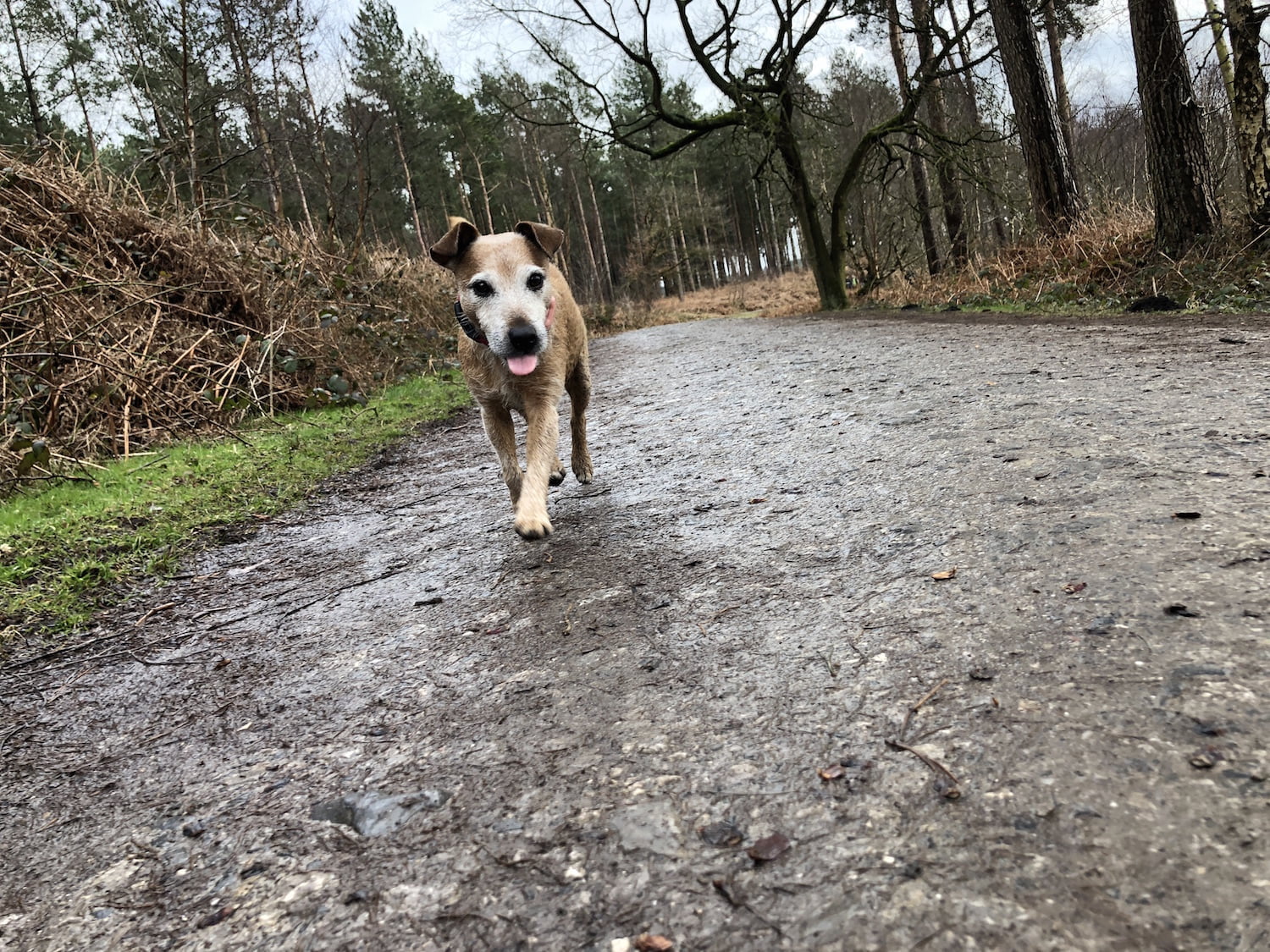Alabama Rot is a mysterious and deadly disease that has sadly already claimed the lives of 43 dogs this year.
It takes the total in the UK to 166 confirmed cases.
David Walker, the UK’s leading expert on the condition from Anderson Moores, said: “It is understandably very worrying for dog owners, but we hope the increase in cases is partially due to a higher awareness and understanding of the disease.
“However this disease is still very rare, so we’re advising dog owners to remain calm but vigilant, and seek advice from their local vet if their dog develops unexplained skin lesions.”
Alabama Rot advice for owners
Earlier this year I shared a photo on Instagram of Daisy enjoying a woodland walk at Delamere Forest near our home in Cheshire.
Almost straight away Cate who owns Doug the Pug Therapy Dog and Marianne, who owns pet model Lilliput, shared their concerns about Alabama Rot.
It’s what inspired me to write a guide which I hope owners will find useful, without sensationalising this worrying disease.
There are 8.5 million dogs in the UK according to the Pet Food Manufacturers Association and while the disease has affected a very small number, it’s vital to know how to protect our pets.
We spoke to three experts on the disease on their advice for owners.
What is Alabama Rot?
Alabama Rot is clinically known as idiopathic cutaneous and renal glomerular vasculopathy (CRGV) and originated in America in the 1980s and initially only affected Greyhounds.
The first case in the UK was in 2012 and there has been 143 confirmed cases since, in 37 counties. (figure correct at time of writing)
In 2012, there was six cases but by 2017 this figure had risen to 38.
It affects dogs of all breeds and causes damage to the blood vessels of the skin and kidneys causing blood clots to form. The first sign is lesions on the skin.
They appear like bites or sores and if the clots form in the kidneys, they can cause kidney failure which leads to death.
What are the symptoms?
David Walker explains what to look out for.
He said: “The first sign that is normally seen is a skin sore not caused by any known injury. Most commonly, these sores are found below the elbow or knee and appear as a distinct swelling, a patch of red skin, or are open and ulcer-like.”
Below are some photos provided by Anderson Moores so you can recognise what the sores look like – I know they’re graphic but they could save a dog’s life and they can also appear on the face or stomach.
Between two days to a week later, dogs show outward signs of sudden kidney failure which can include vomiting, reduced hunger and being unusually tired.


What should I do if I’m worried about my dog?
Go straight to your vet. Treatment has been successful in around 20 per cent of cases.
Dr Huw Stacey from Vets4Pets said: “We’re encouraging all dog owners to use the online interactive guide to help them understand the clinical signs and confirmed locations of the condition.
“If a dog becomes affected, the best chance of recovery lies with early and intensive veterinary care at a specialist facility such as Anderson Moores.
“Any dog owners who are worried that their pet might have Alabama Rot should contact their veterinary practice immediately.
“This will help build knowledge about the disease and also give a dog the best chance of survival.”
You can view the online interactive guide by following this link www.vets4pets.com/stop-alabama-rot

How can I protect my dog?
It’s understandable that owners are very worried, particularly those living in counties where there have been a lot of reported cases.
Where I live, there has been 22. There is no known way to prevent a dog getting the disease.
It’s thought the disease is picked up on the paws and legs while out on muddy walks, so the advice from Vets4Pets is to wash off woodland mud after walks.
Check their legs, paws, face and tummy for sores and lesions and if in doubt, see your vet immediately.
Dr Stacey urges owners to continue allowing their dogs to enjoy walks, and to be aware of the signs.
He said: “It’s understandable that dog owners will be worried by this increase in confirmed cases but Alabama Rot is still a very rare disease and we’d encourage owners to continue exercising their pet.
“It’s encouraging to see so many people from different organisations and fields of science coming together to find out more about it, and hopefully find the cause.”

How do I know if there have been cases where I walk my dog?
You can use the interactive map above – simply click on the image and it will take you to the site and you can search by postcode.
It will tell you how many cases there have been in your area. If you’re going to a place you haven’t been before, search Alabama Rot and the location as many cases have been reported in the media too.
What is being done to tackle Alabama Rot?
The Alabama Rot conference took place in May 2017 to plan the first stage of research, and was funded by the New Forest Dog Owner’s Group and charity Stop Alabama Rot.
Dr Kim Stevens of the Royal Veterinary College is leading the study and hopes to have the results published this month – we will update as soon as this happens.
She said: “This research will not identify the specific cause of the disease, but is designed to look for geographical patterns, as well as environmental and climatic risk factors.
“An obvious pattern that we can see is linked to seasons, with the vast majority of cases occurring between November and March, and limited cases over the summer.
“We hope our ongoing research with Anderson Moores and the work that Vets4Pets are doing will take us closer to finding the cause of this nasty disease.”
What can I do to help prevent more dogs falling ill?
Thankfully, there is a lot of research being carried out in the UK so vets can learn more about the condition and how to treat it.
But funds are needed to support this and a Stop Alabama Rot charity has been set up to help.
If you’d like to donate, you can visit the Alabama Rot Research Foundation website at www.arrf.co.uk
If you found this post helpful, you may want to read Raising money for Alabama Rot Research in memory of Cocker Spaniel Maggie.







2 Responses
Thank you for such an informative, helpful and interesting article Rachel & Daisy. Partic loving the info graphic – so colourful and punchy and looks really good. Clever you learning that so quickly! X
Thanks so much for commenting Marianne and Lills, and for prompting us to write about it as well! I hope you found it helpful and other owners too. xx